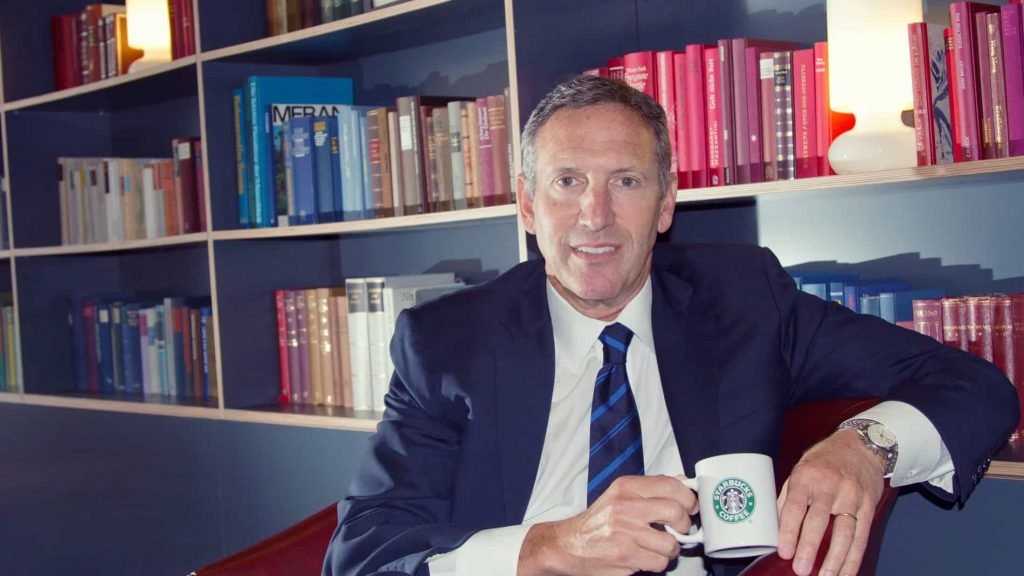Howard Schultz: profile of the visionary behind Starbucks’ global success

Howard Schultz, el visionario detrás del éxito mundial de Starbucks.
In the world of business, few entrepreneurs have achieved the level of success and recognition enjoyed by Howard Schultz. As the driving force behind Starbucks, Schultz transformed a small regional coffee company into a global powerhouse, revolutionizing the way people experience and consume coffee. In this article, we explore Howard Schultz’s journey as an entrepreneur, providing a clear and concise overview of his background, achievements, and the key factors that have contributed to his success.
Early life and education
Born on July 19, 1953, in Brooklyn, New York, Howard Schultz grew up in a working-class family in the Canarsie neighborhood. His father, Fred, was a truck driver, and his mother, Elaine, worked as a receptionist. Schultz’s humble beginnings would later play a significant role in shaping his business approach and his commitment to social responsibility.
Schultz excelled in high school both academically and athletically, eventually earning a football scholarship to Northern Michigan University. He was the first in his family to attend college and graduated in 1975 with a degree in communications.
Early career and the birth of a vision
After graduating from college, Schultz began his career in sales and marketing, working for companies such as Xerox and Hammermill Paper. In 1981, he joined Starbucks, a small coffee company in Seattle, as Director of Retail Operations and Marketing. At the time, Starbucks had only four stores and focused primarily on selling whole coffee beans and high-end equipment.
In 1983, Schultz traveled to Italy on a business trip, where he was captivated by the rich coffee culture and the sense of community surrounding local espresso bars. Inspired by the experience, he returned to Seattle with a vision to transform Starbucks into a place where people could not only purchase exceptional coffee but also gather and connect with one another.
The founding of Il Giornale and return to Starbucks
Despite his enthusiasm for the idea, Schultz initially faced resistance from Starbucks’ founders, who were reluctant to move away from the company’s original business model. Undeterred, Schultz left Starbucks in 1985 and founded his own coffee company, Il Giornale, with the goal of bringing his vision to life.
The success of Il Giornale quickly caught the attention of Starbucks’ founders, who approached Schultz in 1987 with an offer to sell the company. Schultz seized the opportunity and, with the help of investors, purchased Starbucks for $3.8 million. He merged the two companies under the Starbucks name and embarked on an ambitious plan to expand the brand across the United States and eventually around the globe.
Starbucks’ meteoric rise
Under Schultz’s leadership, Starbucks experienced unprecedented growth and success. By 1992, the company had over 100 stores and launched its initial public offering, raising $25 million. Over the next two decades, Starbucks continued to grow at a rapid pace, reaching over 30,000 stores in 80 countries by 2021.
Schultz’s vision for Starbucks extended beyond simply selling coffee; he aimed to create a unique customer experience centered on the concept of the “third place”: a welcoming, comfortable space between home and work where people could relax, socialize, and enjoy high-quality coffee. This vision resonated with consumers, and Starbucks quickly became synonymous with modern coffee culture.
Leadership style and commitment to social responsibility
Howard Schultz’s leadership style has been a key factor in his success as an entrepreneur. He is known for his ability to inspire and motivate employees, fostering a strong corporate culture built on shared values and a commitment to excellence. Schultz has often cited his upbringing as a major influence on his leadership approach, stating that his experiences growing up in a struggling household instilled in him a deep sense of empathy and responsibility.
Schultz’s commitment to social responsibility has also been a hallmark of his tenure at Starbucks. Under his leadership, the company has launched numerous initiatives aimed at promoting environmental sustainability, supporting local communities, and ensuring ethical coffee sourcing. Starbucks has also been widely recognized for its progressive employee benefits, including healthcare coverage, stock options, and tuition assistance for part-time workers.
Conclusion
Howard Schultz’s entrepreneurial journey is a testament to the power of vision, determination, and resilience. From his modest beginnings in Brooklyn to his meteoric rise as the leader of a global coffee empire, Schultz has consistently defied expectations and pushed the boundaries of what is possible. His success as the force behind Starbucks serves as an inspiration to aspiring entrepreneurs and a reminder of the importance of innovation.





